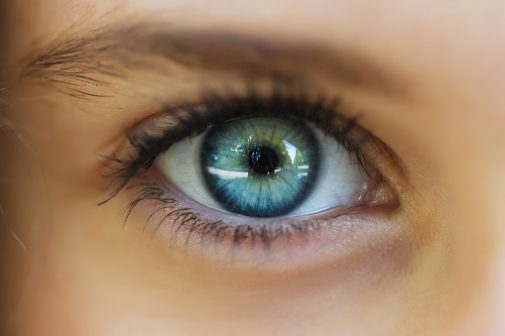Here’s how your eyes are windows to your health

Eye doctors (ophthalmologists) are often the first to spot certain health problems. While symptoms of health issues can show on your skin, mouth and even fingernails, the eyes reveal even more.
“We recommend a yearly eye exam for those 40 and older even if you have no vision issues,” says Dr. Laura Sanders, an ophthalmologist affiliated with Advocate Illinois Masonic Medical Center in Chicago. “In addition to noticing issues and changes with your eyes in the early stages, we can often diagnose other health issues that can be treated before they cause a problem – issues that cannot be seen by the naked eye.”
Dr. Sanders outlines five areas of the eye that are examined and some of the more common conditions that each area of the eye can reveal:
- Lid exam:
- Blockage of oil glands
- Small lid lesions that may be early cancers
- Yellowish patches on the eyelids that can indicate high cholesterol
- Floppy lids, which may be associated with floppy eyelid syndrome – a condition more common in heavyset males, which is often associated with sleep apnea and could cause higher morbidity
- Corneal exam (surface of the eye):
- Unusual thinning disorders, which are more common in patients with arthritic conditions
- Arcus senilis, a syndrome where a white, gray or blue opaque ring develops around the eye, which can be a sign of aging or can be caused by high cholesterol
- Lens exam:
- During this portion of the exam, your eye doctor will assess for cataracts – over 100 different kinds. A cataract is a clouding of the normally clear lens of your eye. Cataracts are the most common cause of vision loss in people over the age of 40 and the principal cause of blindness in the world.
- You may be tested for macular degeneration, a previously untreatable medical condition, which now has many revolutionary therapies to stabilize or improve central visual loss. Early on, a patient may have few to no symptoms. While this condition cannot be cured, if diagnosed early through an eye exam, you can take steps to slow its progression.
- Optic nerve exam:
- This is the area of the eye checked for glaucoma, a silent condition that could rob someone of their peripheral vision.
- Nerve swelling, which can be a sign of increased intracranial pressure, vein occlusion and sometimes diabetes
- Examination of blood vessels:
- This examination can reveal an embolus or clot from the carotid arteries – the two main arteries that carry blood to the head and neck – or from the heart
- Your doctor can see the development of new abnormal blood vessels that occur in eyes that lack good oxygen supply. This often presents in premature babies, diabetics and patients who have had an artery blockage.
- The peripheral retina can show lattice degeneration, which is a thinning of the retina more common in near-sighted people and can lead to a much higher incidence of retinal tear or detachment.
Related Posts
Comments
About the Author
Kate Eller was a regional director of public affairs and marketing operations for Advocate Health Care. She enjoys road trips, dogs, minimalism, yoga, hiking, and “urban hiking.”

















